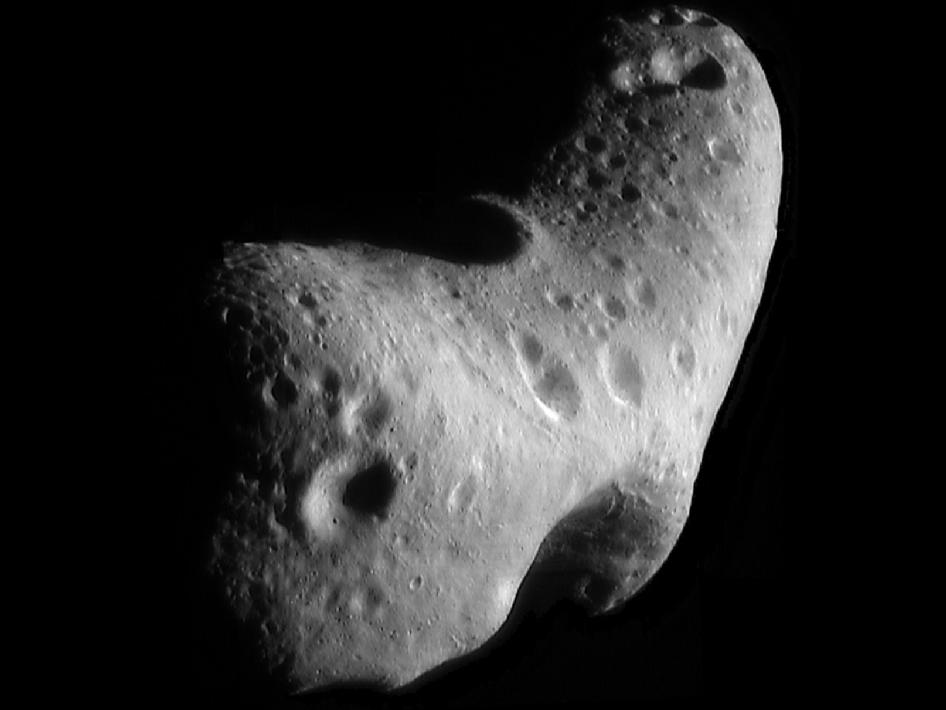What Are The Differences Between An Asteroid, Comet, Meteoroid, Meteor and Meteorite?
Asteroid: A relatively small, inactive, rocky body orbiting the Sun.
Comet: A relatively small, at times active, object whose ices can vaporize in sunlight forming an atmosphere (coma) of dust and gas and, sometimes, a tail of dust and/or gas.
Meteoroid: A small particle from a comet or asteroid orbiting the Sun.
Meteor: The light phenomena which results when a meteoroid enters the Earth’s atmosphere and vaporizes; a shooting star.
Meteorite: A meteoroid that survives its passage through the Earth’s atmosphere and lands upon the Earth’s surface.
Size and Frequency
Every day, Earth is bombarded with more than 100 tons of dust and sand-sized particles.
About once a year, an automobile-sized asteroid hits Earth’s atmosphere, creates an impressive fireball, and burns up before reaching the surface.
Every 2,000 years or so, a meteoroid the size of a football field hits Earth and causes significant damage to the area.
Only once every few million years, an object large enough to threaten Earth’s civilization comes along. Impact craters on Earth, the moon and other planetary bodies are evidence of these occurrences.
Space rocks smaller than about 25 meters (about 82 feet) will most likely burn up as they enter the Earth’s atmosphere and cause little or no damage.
If a rocky meteoroid larger than 25 meters but smaller than one kilometer ( a little more than 1/2 mile) were to hit Earth, it would likely cause local damage to the impact area.
We believe anything larger than one to two kilometers (one kilometer is a little more than one-half mile) could have worldwide effects. At 5.4 kilometers in diameter, the largest known potentially hazardous asteroid is Toutatis.
By comparison, asteroids that populate the main asteroid belt between Mars and Jupiter, and pose no threat to Earth, can be as big as 940 kilometers (about 583 miles) across.
How is an Asteroid Orbit Calculated?
An asteroid’s orbit is computed by finding the elliptical path about the sun that best fits the available observations of the object. That is, the object’s computed path about the sun is adjusted until the predictions of where the asteroid should have appeared in the sky at several observed times match the positions where the object was actually observed to be at those same times. As more and more observations are used to further improve an object’s orbit, we become more and more confident in our knowledge of where the object will be in the future.
What is NASA doing to find and learn more about potentially hazardous asteroids and comets?
NASA has established a Planetary Defense Coordination Office (PDCO), managed in the Planetary Science Division at NASA Headquarters in Washington, D.C.
The PDCO ensures the early detection of potentially hazardous objects (PHOs) – asteroids and comets whose orbits are predicted to bring them within 0.05 Astronomical Units of Earth (5 million miles or 8 million kilometers) and of a size large enough to reach Earth’s surface – that is, greater than approximately 30 to 50 meters. NASA tracks and characterizes these objects and issues warnings about potential impacts, providing timely and accurate information. NASA also leads the coordination of U.S. Government planning for response to an actual impact threat.
Last Updated: Dec 16, 2017
Editor: NASA Content Administrator



























